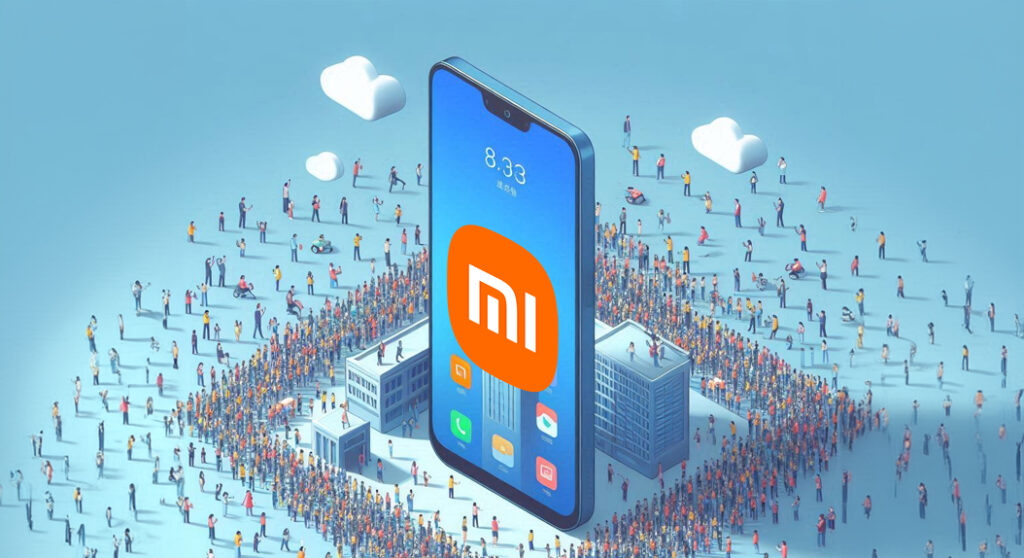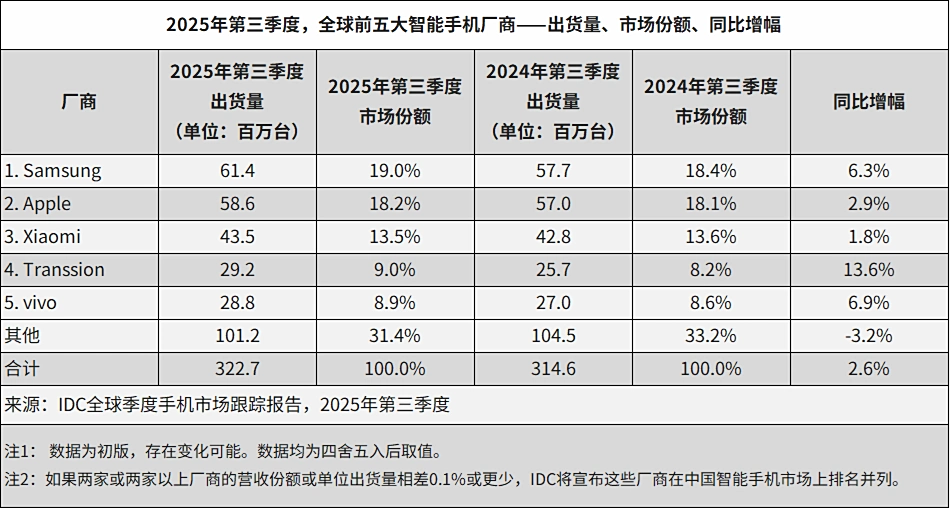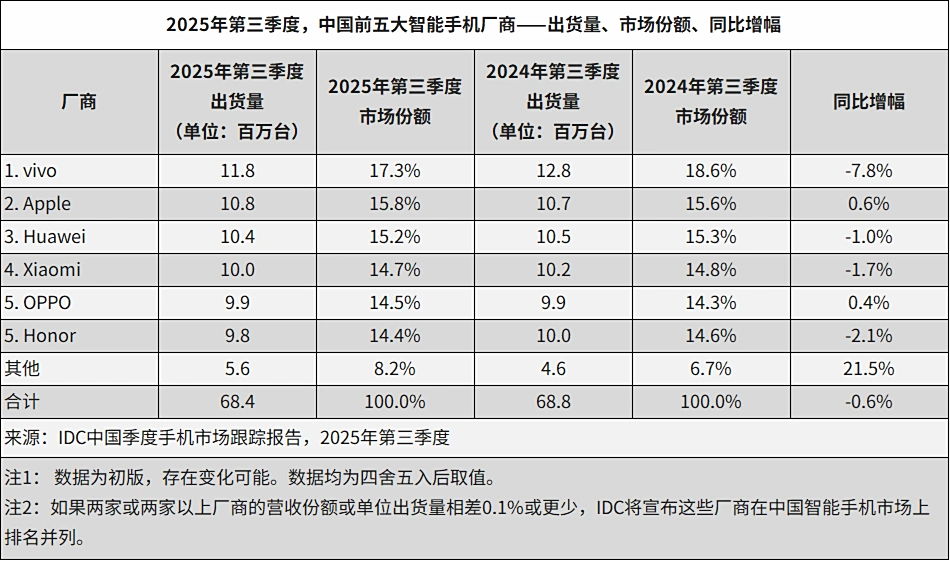As per the most recent report by IDC, worldwide smartphone shipments totaled 322.7 million units in the third quarter of 2025, a year-on-year growth of 2.6%. Smart phone market’s gradual recovery is further fueled by the surging demand for AI-enabled smartphones and dynamically innovative hardware designs, prompting customers for a change of their devices. Global leaders such as Samsung, Apple, and Xiaomi are driving the global charts again this time by displaying dominant performances across several
Global Smartphone Market Overview
During the third quarter of 2025, Samsung took the number one spot with 61.4 million units shipped, representing 19% global market share, representing a 6.3% year-on-year growth. Apple came in second with 58.6 million units shipped and 18.2% market share, achieving a 2.9% yearly growth.
Xiaomi also held its third position worldwide by delivering 43.5 million units and retaining 13.5% of the market, a very impressive 1.8% year-on-year growth. This is a testament to Xiaomi’s sustained global competitiveness, especially in Europe, India, and Southeast Asia where its HyperOS-enabled smartphones and AI-enabled ecosystem devices are continued attractants for those consumers looking for a combination of innovation and affordability.
Transsion, also called the “King of Africa”, realized a great result shipping 29.2 million units and reaching a 13.6% year-on-year growth, while vivo finished fifth shipping 28.8 million units and holding an 8.9% global share, shipping *6.9% year-over-year growth.
Chinese Market Trends
The top five Chinese home market suppliers for the quarter were vivo, Apple, Huawei, Xiaomi, and OPPO/Honor (in a tie for fifth). But the overall Chinese smartphone shipments declined by a marginal 0.6% year-on-year, which indicates that the domestic demand keeps slowing down.
This quarter is a traditional low season for the smartphone market because new models are fewer in number and policies of government subsidy become tighter. With all this aside, a number of flagship leaders, like Xiaomi, pre-launched their flagships a bit earlier than previously, for instance, in mid-to-late September, hoping to boost the market’s performance in the early month ahead.
Despite the upcoming Double Eleven shopping festival, analysts at IDC believe that consumer demand will see limited growth and stress that makers need stress product differentiation and innovation more than they need to cut their prices or offer short-term promotions.
Xiaomi’s Strategic Plan
Xiaomi’s steady growth indicates the success of its model of keeping premium design, integration of AI, and optimization of HyperOS commonplace across its products. It has managed to maintain a balance between premium experiences and competitive pricing, which has helped it expand globally. With the brand adding AI-oriented technologies, smart home integration, and expansion into global markets, Xiaomi’s impact in the smartphone space will further increase during 2026.
Source: ITHome


 Emir Bardakçı
Emir Bardakçı



